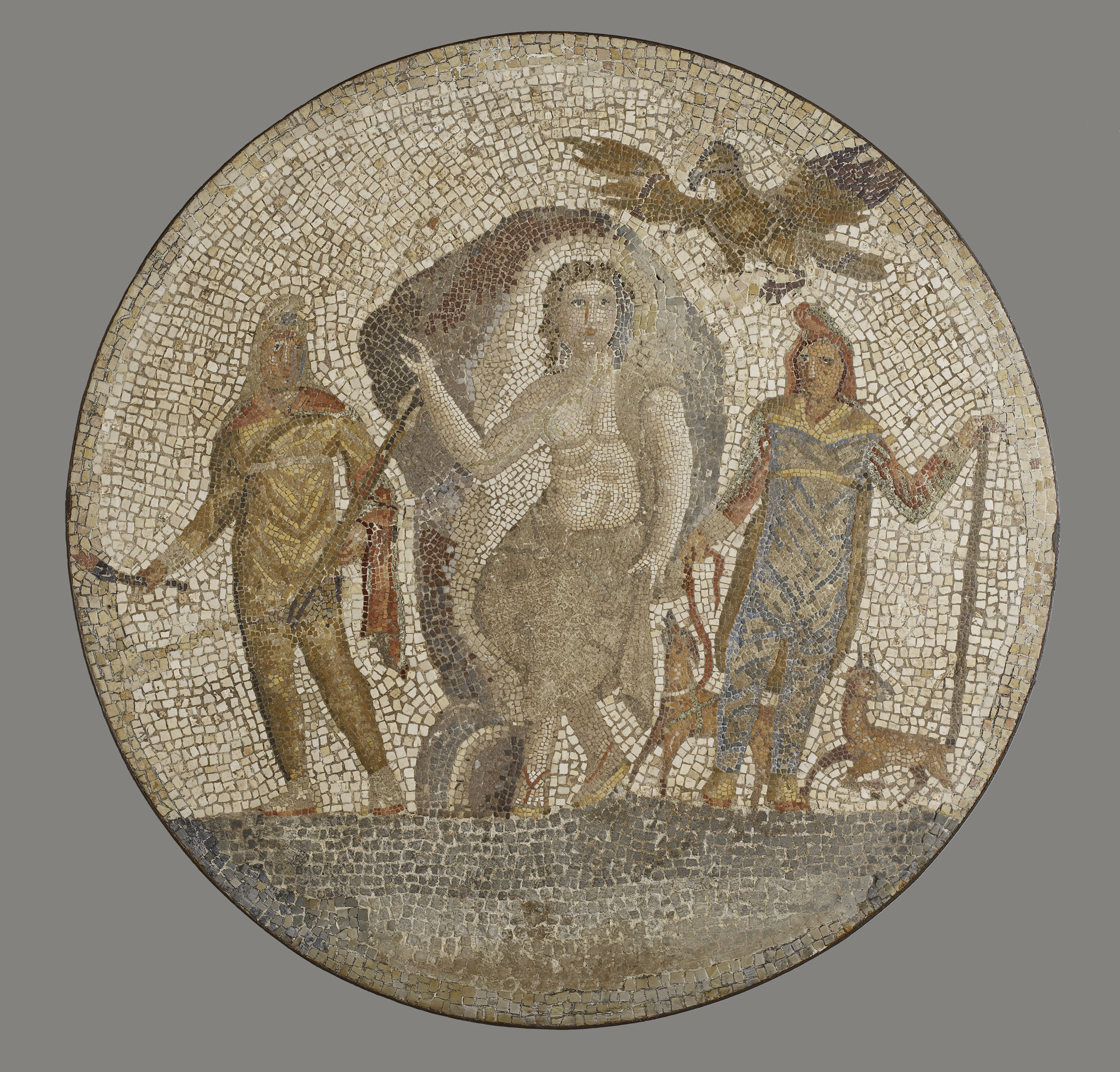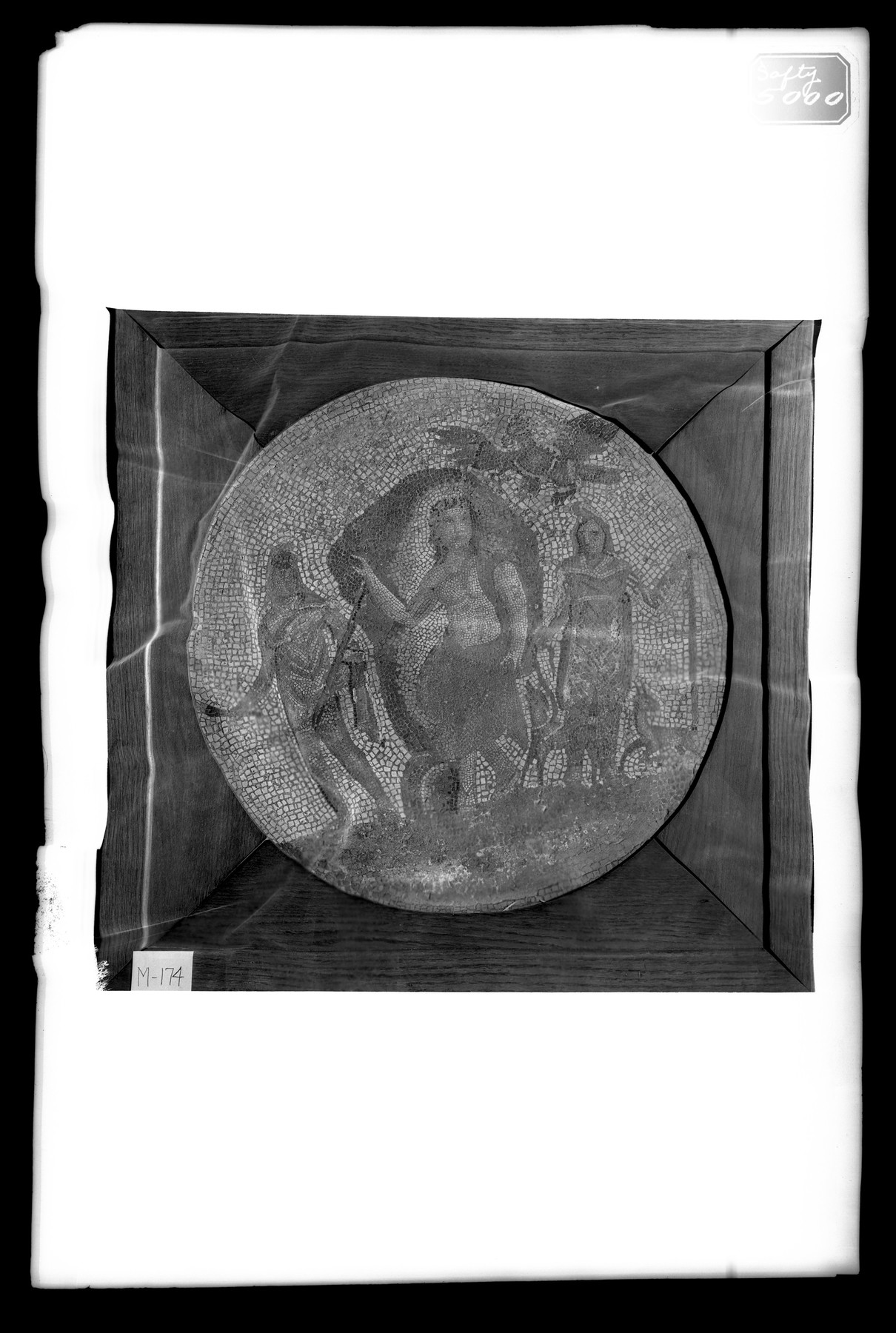Mosaic Medallion with Ganymede and Zeus
Although previously identified as depicting the god Mithras, the scene on this mosaic medallion shows a variation of the abduction of Ganymede by Zeus in the form of an eagle. According to mythology, Zeus was captivated by a young Trojan prince, Ganymede, the most beautiful human, and Zeus abducted him to serve as his cupbearer. Here the animals and scenery show that the scene takes place in the countryside. The partial nudity of the central figure fits the story of the beautiful Ganymede (Mithras would not have been depicted nude). Other depictions commonly show Ganymede wearing a Phrygian cap, and although he does not wear one here, his attendants do.
Provenance
Provenance (from the French provenir, 'to come from/forth') is the chronology of the ownership, custody, or location of a historical object. Learn more about provenance at the Walters.
[Found in Egypt by 1902]. P. Philip et divers amateurs, Sale, Paris, Hôtel Drouot, 1905 [no. 583]. Haas Bing, Paris, [date and mode of purchase unknown]; Joseph Brummer, Paris and New York, 1922, by purchase [Brummer inv. no. N575]; Henry Walters, Baltimore, 1922, by purchase; Walters Art Museum, 1931, by bequest.
Conservation
| Date | Description | Narrative |
|---|---|---|
| Examination | Examined | |
| Examination | Examined in the course of case retro-fit and re-installation. | |
| 10/5/2000 | Treatment | other |
| 4/17/2001 | Treatment | cleaned; coated |
Geographies
Egypt, Delta (Place of Origin)
Measurements
Diam: 23 7/8 in. (60.6 cm); Framed H: 30 13/16 x W: 30 13/16 x D: 2 5/8 in. (78.3 x 78.2 x 6.7 cm)
Credit Line
Acquired by Henry Walters, 1922
Location in Museum
Accession Number
In libraries, galleries, museums, and archives, an accession number is a unique identifier assigned to each object in the collection.
In libraries, galleries, museums, and archives, an accession number is a unique identifier assigned to each object in the collection.
43.7




